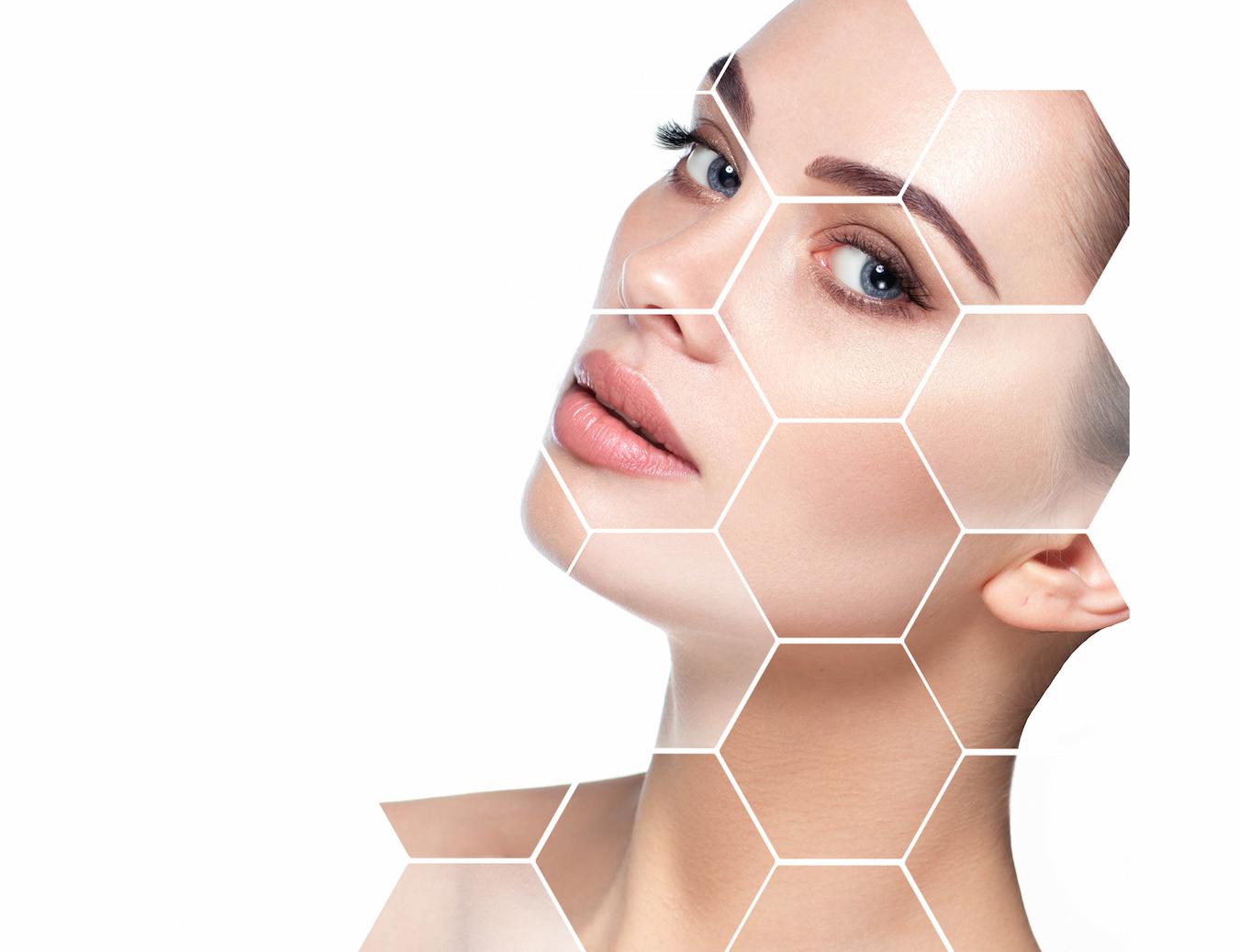How To Know If You Have Combination Skin

People with combination skin have a unique set of circumstances. This isn’t to say that those with dry skin, oily skin, or sensitive skin have it easy.
But of all the skin types out there, combination skin certainly has its quirks. You might be surprised to know that combination skin is actually the most common skin type among younger people.
So if you have combination skin, you can rest assured that you’re not alone. But just in case you’re looking to confirm that combination skin truly is your skin type, keep reading to see if any of these signs ring true for you.
See Related: Which Foundation Is Best for Combination Skin?
#1. You have an oily T-zone
If you’re not familiar, the T-zone consists of your forehead, nose, and chin. Every skin type differs based on how much hydration the skin can hold and how active their sebaceous glands are.
And for combination skin types, the sebaceous glands run rampant in the T-zone. This excess oil production can cause breakouts, larger pores, and more.
So you might be tempted to address the excess sebum in these oily areas. But what happens to the rest of your face?
#2. But you have dry cheeks
Your cheeks remain dry. Typically, combination skin types will have unblemished cheeks since they don’t produce as much oil as the T-zone.
But this also means that your cheeks may be prone to dry patches if not moisturized well. The skin cells on the rest of your face may not be able to hold as much moisture, requiring more of an intense moisturizer.
But when you apply that type of moisturizer to your full face, your T-zone feels oily. Such is the struggle for combination skin types trying to appease the various areas of their face.
#3. You have clogged pores around your nose
In areas with too much oil, pores tend to appear larger. And this can trick you into thinking that harsh scrubs are the way to go.

While this may help out normal skin types, this is actually one of the worst things you can do for your combination skin. By stripping your skin of its natural oils, your skin actually goes into hyperdrive, mistaking it for dehydrated skin.
This can lead to even more oil production to try and bring moisture back to the skin’s surface. Instead, these oily skin areas should be treated with ingredients like niacinamide to help regulate sebum and improve hydration at the same time.
#4. But the pores around your cheeks are unnoticeable
The cheeks of those with a combination skin type won’t suffer from enlarged pores. In fact, those pores may be next to unnoticeable.
But this doesn’t stop your cheeks from displaying signs of dry skin such as more visible lines and flaky patches. Those with a combination skin type often report that their skin feels tight in dry places.
So it’s important to keep these areas of the face hydrated using ingredients like hyaluronic acid. The perfect balance would be to find a lightweight moisturizer that’s water based and includes mattifying ingredients so you can address the various parts of your face.
#5. Only some areas of your face are acne-prone
Ever notice how only the oily skin on your face tends to break out? That’s due to the fact that your T-zone produces more oil than other areas of your complexion.
There may be many factors contributing to how acne-prone your T-zone is. But for the most part, you can count on excess oil production to be the main culprit.
But don’t mistake this oily skin for skin that doesn’t need hydration. Instead, after using a gentle cleanser, find oil free hydrators to address these oily spots and balance out your skin type.
#6. You use blotting paper but only on specific areas of your face
If your blotting paper is reserved for an oily T-zone, consider it yet another sign that you have combination skin. Blotting papers can be extremely helpful at soaking up oil throughout the day.
But you may notice that your cheeks may turn to sensitive skin, feeling cracked if you rub them with these sheets. In this case, it’s best to reserve your blotting practice to your nose, forehead, and chin.
And leave your cheeks the moisture they’re trying so hard to hold on to. The last thing you want to do to dry skin is make it even more parched.
#7. After cleansing, your forehead, nose, and chin feel great
Following your skin care routine with a cleanser, your T-zone may feel particularly great. After all, you’ve washed away your oil skin and have a glimpse of what it must be like to have a normal skin type.

But then, about 20 minutes later, you start to see those oily skin areas pop up again. And you’re left with yet another question of how to treat combination skin effectively.
While cleansing is absolutely integral to any skin care routine, it’s important to also include some gentle exfoliation for your combination skin type. Using a natural exfoliator with salicylic acid or glycolic acid will help to slough off dead skin.
#8. But unless you use a mild cleanser, your cheeks feel tight
For dry skin areas on your face, you may feel like a normal cleanser simply sucks out all the moisture. That’s why combination skin types will want to find a hydrating cleanser to incorporate into their skin care regimen.
This way, you can make sure your skin feels more elastic than tight. And you won’t have to also experience the characteristics of dry skin such as dull, rough, flaky patches.
Bonus: 16 Best Toners For Every Skin Type To Buy In 2022
#9. You have trouble finding a moisturizer that works for your full face
If it isn’t obvious by now, combination skin requires a lot of maintenance. And sometimes, that means using different products on various parts of your face.
It may seem like a hassle to have to buy products made for oily skin, sensitive skin, dry skin, and more. But areas with a dry, oily, or sensitive skin type will certainly thank you for going out of your way.
#10. The weather affects just how oily or dry your T-zone gets
Of course, different skin types all get affected by the weather. But those with combination skin will most likely see the most change in their T-zones.

During hot weather, your T-zone may get particularly shiny fast. And that’s where blotting papers can help you control oil as you gently pat away those shiny spots.
Alternatively, you may see your skin go completely dry during cold months. So you’ll want to make sure you keep hydrated with an anti aging moisturizer, even in those combination areas of your skin.
#11. You get breakouts and dry patches at the same time
Breakouts and dry patches together? Seems like a paradox. But alas, that’s exactly what the skin produces when you’re blessed with a combination type of skin.
Rather than give up and go, “Woe is me,” you can address these areas one at a time. Use an oil free cleanser on your acne-ridden skin.
Then follow up with a deeply hydrating skin care ritual for the drier areas of your skin. This extra attention to detail will make you an expert in skin care that’s specifically catered toward your skin type.
#12. Hormonal changes also impact the oilier areas of your face
Again, this is a common characteristic of any skin type. But for those with combination skin, it can be even more so.

When raging hormones skin, combination skin types tend to see their T-zone get extra oily. But once those hormones settle down, those breakouts may clear right up.
Only to leave you with flaky bits. It’s easy to mistake this for dry skin, but you should really see a dermatologist to make sure it’s not an overgrowth of yeast.
After all, you want to make sure you’re addressing the issue at its core. Not just subsiding the symptoms.
#13. You apply less product to different areas of your face
It might feel like a chore to piecemeal your skin care routine to certain areas of your skin. But doing so just reinforces that you know your skin best.
Whether it’s using an oil free cleanser or only applying intense hydration to certain areas, all of these actions and more will help your skin look its best. And feel its best.
The bottom line
If all of these signs rang true to you, then you must have combination skin. But don’t think that this is a skin care curse.
Instead, it’s an opportunity to get to know your skin better. And find what suits it best for its optimal health.
Keep Reading: What Products Are Good For Oily Skin?
—
For over 60 years, Viviane Woodard has represented “The Purity of Skincare”. We are the leading beauty brand for skin care products and promote the importance of good skin hydration. Follow us on Facebook, Instagram, Twitter, and Pinterest for skin care tips, product discounts, and more.
